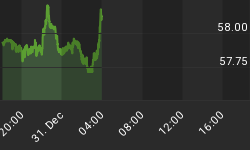Gold is a nearly perfect form of money. It is one of the few things on planet earth that contains all of the following attributes; beauty, scarcity, virtual indestructability, and is also transferable and divisible. However, even after five thousand years of utility as a store of wealth, gold is still completely misunderstood by most on Wall Street.
This is why most money managers wrongfully predict another disastrous year for the yellow metal. These advisors have never realized the simple truth that the value of gold never changes; only its expression in dilutable currencies changes. Therefore, it always preserves its purchasing power over time and is the best hedge against a fiat currency that is headed down the pathway of destruction. Gold prices increase when the market presages a currency will lose its purchasing power -- it's just that simple.
The reason why the dollar price of gold soared from $200 per ounce in the beginning of the last decade, to nearly $2,000 per ounce by the year 2011, was because many feared skyrocketing deficits in the U.S. would soon lead to massive money printing and debt monetization on the part of our central bank. Even though the debt monetization did materialize, as many had feared, the government has also managed to manufacture a temporary "recovery" in the economy by forcing interest rates to zero percent and thus producing bubbles in bonds, stocks and real estate. Theses asset bubbles led to a consumption bubble, which brought about an ersatz resurgence in government revenue. Deficits then fell hundreds of billions of dollars (although they are still gigantic and unsustainable), which has in turn caused the price of gold to undergo a correction from its decade-long advance and to consolidate at the $1,200 per ounce range.
However, there are now only two outcomes for the current fiscal, monetary and economic conditions; and they are both bullish for gold.
The Unlikely Scenario
The Fed will stop buying $85 billion per month of bank debt and will be completely out of the bond-buying business by the fall of 2014. Nevertheless, this will have an inconsequential effect on bank lending, money supply growth and economic growth. The continued condition of negative short and long-term interest rates will lead to a rapid expanse of the fractional reserve lending system and inflation. The fear on the part of gold investors about the Fed's taper will then quickly fade away, as rising inflation sends bullion prices higher, just as it did in the middle of the last decade.
The Realistic Scenario
On the other hand, the Fed's taper leads to spiking longer-term interest rates, falling asset prices and a faltering economy. Those rising interest rates cause the economy to slip back into a recession and deficits to once again spiral out of control. This will force the Fed to adopt a more substantial and protracted QE program than at any other time before, as it desperately seeks to keep long-term rates low in the context of soaring debt and deficits. Money supply growth in this case would be significant because the Fed would yet again be back in the business of monetizing trillion dollar deficits.
In either case the secular bull market in gold will re-emerge in 2014. I believe the yellow metal will approach $1,600 per ounce by the end of next year. I further contend that mining shares have already bottomed in anticipation of a failed Fed exit and will offer investors significant returns in the year ahead.
















